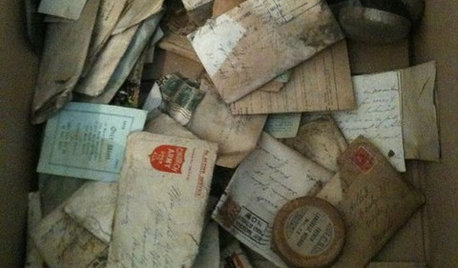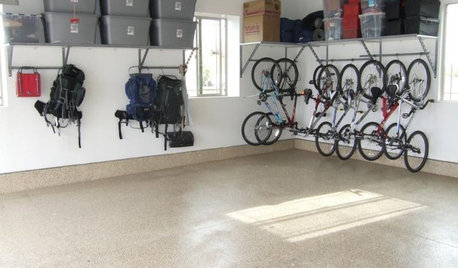John Deere LT 180 won't start.....
tracey_b
13 years ago
Related Stories

REMODELING GUIDESYou Won't Believe What These Homeowners Found in Their Walls
From the banal to the downright bizarre, these uncovered artifacts may get you wondering what may be hidden in your own home
Full Story
MOST POPULARHow to Start a Cool-Season Vegetable Garden
Late summer and late winter are good times to plan and plant cool-season crops like salad greens, spinach, beets, carrots and peas
Full Story
CONTRACTOR TIPS10 Things to Discuss With Your Contractor Before Work Starts
Have a meeting a week before hammers and shovels fly to make sure everyone’s on the same page
Full Story
HOUZZ TOURSMy Houzz: A Family Makes a Fresh Start in a Remodeled Beach House
With neutral hues and ocean views, this Malibu home offers a stunning backdrop for gatherings of family and friends
Full Story
GARDENING GUIDESOh, Deer! 10 Native Flowers That Stand Up to the Herds
Keeping a garden amid hungry deer can be hard, but these plants should fare well
Full Story
MOST POPULARGarage Cleaning Tips for the Overwhelmed
Don’t let this catch-all space get the better of you. These baby steps can get you started
Full Story
GARDENING GUIDES6 Unsung Bulbs for Fall Planting
Don't hang up your spade after summer — plant these unusual bulbs in fall for a spectacular spring show
Full Story
KITCHEN DESIGN15 Farmhouse Kitchens That Made Us Swoon This Month
Raw wood, natural light, shiplap siding — we just couldn’t get enough of these farmhouse-style kitchens uploaded to Houzz in January
Full Story
HEALTHY HOMEWhat to Know About Controlling Dust During Remodeling
You can't eliminate dust during construction, but there are ways to contain and remove as much of it as possible
Full Story
BUDGET DECORATING8 Cost-Effective Ways to Get a High-End Look
Don’t discount that expensive material yet. By using a small amount in a strategic way, you can get a luxurious look without the expense
Full StorySponsored






mownie
mownie
Related Professionals
Richmond Heights Landscape Architects & Landscape Designers · Summit Landscape Architects & Landscape Designers · Brandon Landscape Contractors · Farmington Landscape Contractors · Gurnee Landscape Contractors · Kaneohe Landscape Contractors · Mission Landscape Contractors · St. Louis Landscape Contractors · Suisun City Landscape Contractors · Castro Valley Window Contractors · 45056 Window Contractors · Baker Window Contractors · Cypress Window Contractors · Santa Cruz Window Contractors · Security-Widefield Window Contractorstracey_bOriginal Author
tracey_bOriginal Author
mownie
tracey_bOriginal Author
rcmoser
tracey_bOriginal Author
mownie
rcmoser
tomplum
tracey_bOriginal Author
tracey_bOriginal Author
leodz